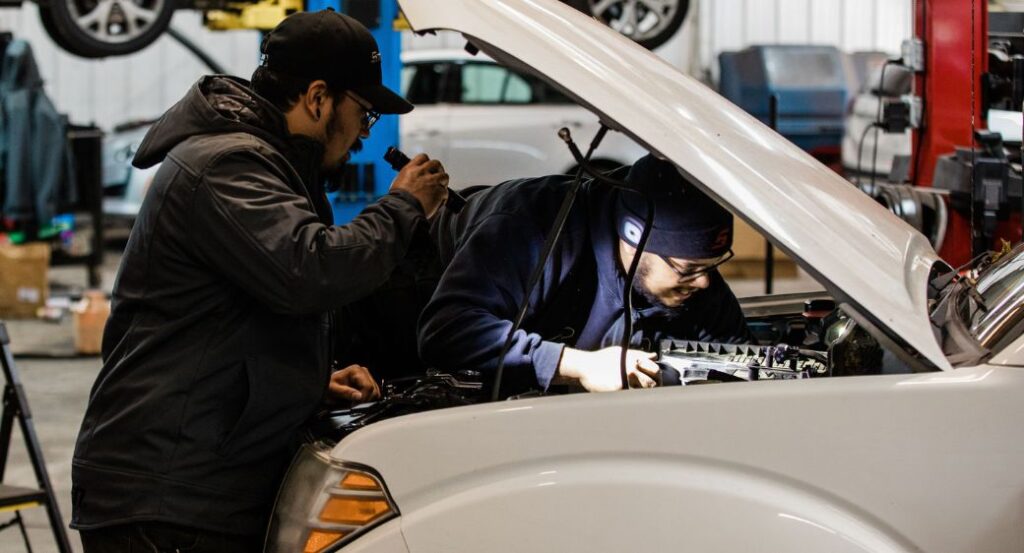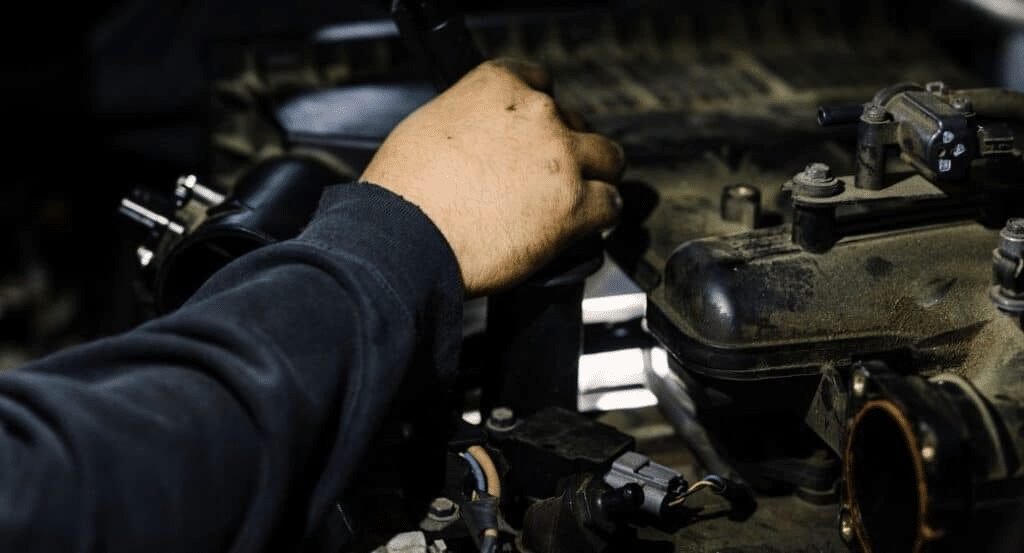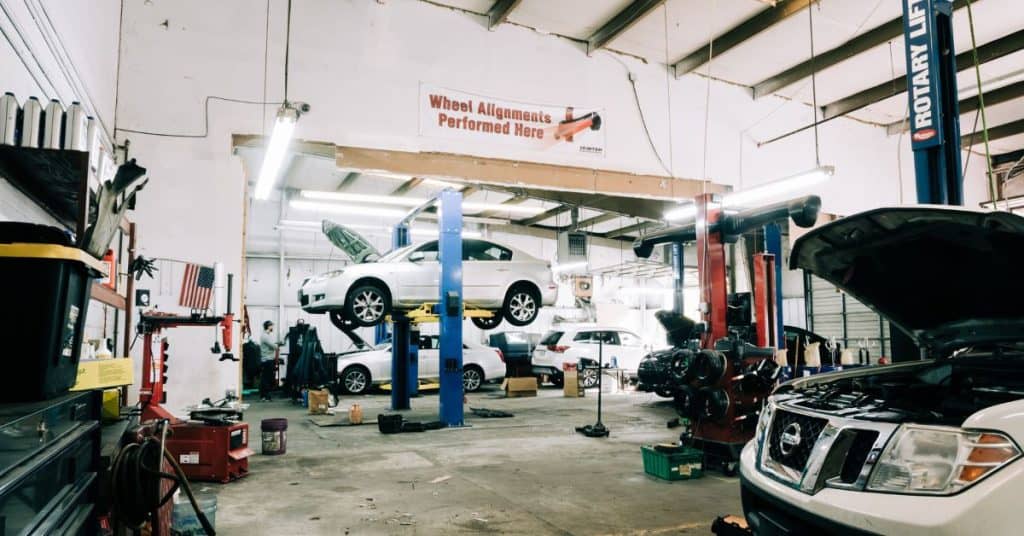When that dreaded check engine light comes on, it often signifies that a Diagnostic Trouble Code (DTC) needs your attention. But what exactly are these codes, and what do they mean for you as a car owner? This blog post will demystify common diagnostic trouble codes (DTCs) and what they mean. We’ll explore the most frequent DTCs, how to interpret them, and what actions you should take when they appear. By the end of this article, you’ll clearly understand how to keep your vehicle running smoothly and avoid costly repairs.
What Are Diagnostic Trouble Codes (DTCs)?
Diagnostic Trouble Codes are codes your vehicle’s onboard computer system uses to identify and diagnose issues. The system triggers these codes when it detects a problem that affects the vehicle’s performance or emissions.
Why should you care about DTCs? Recognizing these codes can save you time, money, and hassle. By understanding what each code signifies, you can proactively address the issue before it escalates into a more severe problem.
The Importance of Knowing Common DTCs
You might wonder why it’s crucial to know about common DTCs. For starters, familiarity with these codes helps you make informed decisions about your car’s maintenance. Ignoring a DTC can lead to more significant issues down the line, potentially resulting in hefty repair bills.
Additionally, having a basic knowledge of DTCs empowers car owners. Instead of feeling helpless when the check engine light comes on, you’ll be confident to address the problem head-on.
How To Read a DTC
Reading a DTC isn’t as daunting as it may seem. Typically, a DTC consists of five characters—an initial letter followed by four digits. The initial letter indicates the system affected, while the digits provide specific information about the issue.
For example, P0301 is a common code. The “P” stands for Powertrain, signifying an issue within the engine or transmission. The following digits pinpoint the exact problem area.
Common DTC P0300 Random/Multiple Cylinder Misfire Detected
One of the most frequent DTCs is P0300, which indicates a random or multiple-cylinder misfire. This code means the engine’s cylinders are not firing correctly, leading to poor performance and fuel efficiency.
A misfire can result from various factors, such as faulty spark plugs, ignition coils, or fuel injectors. Promptly addressing this issue is essential to prevent further damage to the engine.

Common DTC P0420 Catalyst System Efficiency Below Threshold
Another prevalent code is P0420, which points to a problem with the catalytic converter. The catalytic converter reduces harmful emissions. The vehicle’s emissions can increase when its efficiency drops below the threshold, potentially failing a smog test.
Several issues can trigger this code, including a damaged catalytic converter, faulty oxygen sensors, or an exhaust leak. Identifying and fixing the root cause is crucial for maintaining your vehicle’s emission standards.
Common DTC P0171 System Too Lean (Bank 1)
P0171 is a code indicating that the engine is running too lean; rather, there’s too much air and insufficient fuel in the combustion mixture. This imbalance can lead to a rough idle, stalling, and reduced fuel efficiency.
Vacuum leaks, dirty or faulty mass airflow sensors, and low fuel pressure are common causes of a lean condition. Promptly addressing these issues can restore your engine’s optimal performance.
Common DTC P0301 Cylinder 1 Misfire Detected
P0301 is a specific cylinder misfire code, indicating that Cylinder 1 is not firing correctly, which can result in rough idling, reduced power, and increased emissions.
Wearing spark plugs, a faulty ignition coil, or a clogged fuel injector are possible culprits for a cylinder misfire. Diagnosing and fixing the issue can prevent further engine damage and improve overall performance.
Common DTC P0455 Evaporative Emission System Leak Detected (Large Leak)
The P0455 code suggests a significant leak in the evaporative emission system (EVAP). The EVAP system captures and stores fuel vapors, preventing them from escaping into the atmosphere.
A large leak can result from a loose or damaged gas cap, a cracked EVAP hose, or a faulty purge valve. Ensuring a firm seal on the EVAP system is vital for reducing emissions and maintaining fuel efficiency.

Common DTC P0440 Evaporative Emission System
P0440 is another EVAP-related code indicating a general issue with the evaporative emission system. Any number of problems can trigger this code within the EVAP system, making a thorough diagnosis essential.
Common causes include a faulty gas cap, a leaking EVAP hose, or a malfunctioning vent valve. Addressing these issues can prevent fuel vapors from escaping and improve your vehicle’s emissions performance.
Common DTC P0113 Intake Air Temperature Sensor 1 Circuit High
The P0113 code signifies a high voltage input from the intake air temperature (IAT) sensor. The IAT sensor measures the temperature of the incoming air, providing crucial data for the engine control unit (ECU).
A high voltage reading can result from a disconnected or faulty IAT sensor. Ensuring the sensor functions correctly is essential for optimal engine performance and fuel efficiency.
Common DTC P0401 Exhaust Gas Recirculation Flow Insufficient Detected
P0401 indicates an issue with the exhaust gas recirculation (EGR) system, specifically insufficient flow. The EGR system helps reduce nitrogen oxide emissions by recirculating exhaust gases into the engine.
Common causes of this code include a clogged EGR valve, a faulty EGR solenoid, or carbon buildup. Addressing these issues can improve your vehicle’s emissions and overall performance.
Common DTC P0141 O2 Sensor Heater Circuit Malfunction (Bank 1, Sensor 2)
The P0141 code points to a malfunction in the oxygen (O2) sensor heater circuit. The O2 sensors monitor the oxygen levels in the exhaust gases, providing essential data for the ECU.
A malfunctioning heater circuit can result from a faulty O2 sensor or damaged wiring. Ensuring the O2 sensors function ensures optimal fuel efficiency and emissions performance.
Common DTC P0128 Coolant Thermostat (Coolant Temperature Below Thermostat Regulating Temperature)
P0128 is a code that indicates the engine coolant temperature is below the thermostat’s regulating temperature, resulting in poor fuel efficiency and increased emissions.
Common causes include a stuck-open thermostat, a faulty coolant temperature sensor, or low coolant levels. Addressing these issues can restore your engine’s optimal operating temperature.
Additional Insights: Understanding Your Vehicle's Diagnostic Report

Modern diagnostic reports contain far more than a list of codes. They offer detailed insights into how various vehicle systems are functioning. While DTCs point to where a fault has been detected, understanding how that code fits into the bigger picture requires deeper analysis.
Breaking Down Diagnostic Report Sections
Understanding which category a code belongs to helps prioritize necessary repairs more effectively. Diagnostic reports are typically divided into categories that mirror your car’s core systems. These include emissions, powertrain, body electronics, and communication networks. For example:
- Emission systems might trigger DTCs if your catalytic converter or oxygen sensors are underperforming.
- Powertrain-related codes may reflect engine misfires, transmission slips, or irregular fuel delivery.
- Chassis and electrical issues can flag problems with airbags, wipers, or lighting systems.
- Communication errors indicate a failure between your vehicle’s control modules.
The Value of Live Sensor Data
Beyond fault codes, many reports provide live sensor data and real-time information such as coolant temperature, air intake levels, engine RPM, or voltage. This data helps technicians identify performance trends or catch intermittent problems that may not always set a code.
If coolant temperature readings fluctuate wildly without a DTC, it might point to an impending thermostat or sensor failure. Analyzing this kind of live input gives a more complete picture of your vehicle’s health.
Common Findings and Their Implications
Certain fault patterns show up frequently in diagnostic reports. Understanding these common indicators helps take quick, accurate next steps. For instance:
- Sensor errors can indicate a faulty sensor or an issue affecting its readings (like a vacuum leak).
- Fuel system faults may be related to clogged injectors or failing fuel pumps.
- Ignition misfires often point to worn spark plugs or coil pack issues.
What to Do After Reviewing a Report
Once a diagnostic report reveals an issue, assess its urgency. Critical problems, like those involving the powertrain, should be addressed immediately. Minor performance faults, on the other hand, may be scheduled for a later repair.
When in doubt, consulting with a trusted technician ensures the right action is taken. Remember, codes don’t tell the full story. Use them alongside live data and visual inspections for the best results.
Stay Ahead of Car Trouble
With practice, interpreting a diagnostic report becomes second nature. It equips you to catch issues early, avoid unnecessary repairs, and keep your car performing as it should. Whether you're checking for emissions issues or tracking down a stalling engine, being proactive about diagnostics can extend the life of your vehicle and your budget.
Reach Out for Smarter Car Care Today

Understanding common diagnostic trouble codes (DTCs) and what they mean is essential for every car owner. By familiarizing yourself with these codes, you can take proactive steps to maintain your vehicle’s health and avoid costly repairs.
Next time your check engine light comes on, you’ll have the knowledge and confidence to promptly address the issue. Blue Ridge Automotive offers comprehensive diagnostic services designed to uncover potential issues early.
Their tools and expertise help identify problems before they escalate, promoting long-term vehicle reliability and performance. Contact Blue Ridge Automotive today to schedule your diagnostic service and keep your vehicle running strong.
Regular tire rotation is crucial for maintaining your vehicle’s safety, handling, and longevity. It helps ensure even tire wear, which can extend the life of your tires and improve your vehicle’s performance. But how do you know when it’s time to rotate your tires? Here are four signs to look out for.
Uneven Tire Wear
One of the most obvious signs that your tires need rotating is uneven wear. If you notice that the tread depth varies significantly from one tire to another, it’s time for a rotation. Front tires tend to wear faster than rear ones, especially on front-wheel-drive vehicles, because they handle the brunt of the steering and acceleration. Rotating your tires helps distribute wear more evenly across all four tires, extending their lifespan and maintaining traction on the road.
Vibration at High Speeds
If you start to feel a vibration in the steering wheel or through the seat at highway speeds, that could be a sign that your tires have uneven wear and need a rotation. While there can be other causes for this symptom, such as wheel alignment issues or imbalanced tires, uneven tire wear is most common. Rotating the tires can often solve the problem and restore a smoother ride.
Reduced Traction or Handling
When tires wear unevenly, it can significantly impact your vehicle’s traction and handling. If you notice that your car isn’t gripping the road in wet conditions or feels less stable around corners, uneven tire wear could be to blame. Rotating your tires can help regain lost traction and improve handling, ensuring your vehicle is safe to drive in all conditions.
It’s Been a While
Even if you haven’t noticed any of the above signs, it’s good practice to rotate your tires according to the manufacturer’s recommendations, typically every 5,000 to 7,500 miles. Regular maintenance ensures that tires wear evenly over time, which can prevent the issues mentioned above. Just like you wouldn’t neglect power steering repair for smooth driving, don’t overlook tire rotation for even tire wear and prolonged tire life.
Now that you know these four signs that it’s time to rotate your tires, you can take proactive steps to maintain your vehicle’s safety, performance, and efficiency. Regular tire care and other maintenance tasks like power steering repair are key to ensuring your vehicle runs smoothly and safely.
Shocks and struts are integral components of your vehicle’s suspension system, crucial for ensuring a smooth ride and safe handling. Over time, these parts wear out and need replacement to maintain vehicle performance and safety. Read on to explore how to know it’s time to replace your car’s shocks and struts.
Understanding Shocks and Struts
Shocks and struts are not interchangeable terms—they refer to different parts that serve similar functions within a vehicle. Shocks, or shock absorbers, help control the impact and rebound movement of your vehicle’s springs and suspension. Struts, on the other hand, are a structural component of the suspension system that also affect ride comfort and vehicle handling. Both play crucial roles in stabilizing your car’s movements and enhancing control when you are driving.
Excessive Bouncing
One of the most noticeable signs that your car’s shocks or struts may need replacing is excessive bouncing. Drive over a bump or a small pothole; if your vehicle continues to bounce or rock back and forth several times, it is a clear indication that your suspension system isn’t performing effectively. This is due to the shocks and struts failing to keep the vehicle steady against the coil springs.
Dipping and Swerving When Braking
Pay attention to how your car behaves when you brake. If you notice that the front end of your car dips dramatically or the rear squats during braking, it could indicate worn-out shocks or struts. This condition not only affects the comfort of your ride but also extends the braking distance, which can compromise your safety.
Uneven Tire Wear
Inspect your vehicle’s tires regularly for uneven wear patterns. Cupping or scalloping of tires often indicates that the shocks and struts are not holding the vehicle steady against the road. Uneven tire wear can result in poor handling and traction, leading to increased risk while driving.
Leaking Fluid
If fluid is leaking down the side of your car’s shocks or struts, they may be broken or losing their effectiveness. The fluid in the shocks and struts helps dampen the impact from road surfaces, and a leak can result in reduced performance and increased wear and tear on other components of the suspension system.

Poor Steering Response
Worn shocks and struts can also affect your car’s steering responsiveness. If steering feels stiff or your vehicle sways or leans on turns or when changing lanes, it could be a sign that the shocks or struts are failing. This can affect your ability to control your vehicle, especially at higher speeds.
Increased Road Noise
Another indicator of worn shocks and struts is an increase in road noise and vibration coming through the vehicle. As these parts degrade, they become less effective in absorbing the bumps and vibrations from the road, resulting in a rougher and noisier ride.
Mileage Indicator
Most manufacturers recommend replacing the shocks and struts after approximately 50,000 miles, but this can vary depending on vehicle type and driving conditions. Check your vehicle’s owner manual for specific recommendations. Regular checks by a professional can help assess whether your vehicle’s suspension needs attention sooner.
Vehicle Instability at High Speeds
If your vehicle feels unstable or “floats” at high speeds, or if you feel excessive vibration through the steering wheel, it’s likely time to check your suspension system. This instability can be dangerous, particularly in windy conditions or on uneven road surfaces.
Difficulty Handling When Loaded
If your vehicle struggles to stabilize after being loaded or it feels unusually bumpy while carrying a heavier load, it might be a sign that the shocks and struts are worn out. Effective shocks and struts should be able to handle heavier loads without compromising the vehicle’s stability.
Visual Inspection
Sometimes, the physical condition of the shocks and struts can indicate wear. Look for signs of rust or damage to the shock or strut housing. Any visible damage or unusual conditions could suggest it’s time for replacements.
Stability Testing
The bounce test is a quick and straightforward way to check the condition of your car’s shocks and struts. Simply push down with force on the front end of your parked vehicle and then let go. Observe how the vehicle reacts. If it rebounds more than once or twice, this is a strong indication that the shocks or struts are worn out and unable to effectively dampen the movement. Repeat this test at the rear of the vehicle to ensure all components are functioning correctly. This simple diagnostic can be performed at home, helping you decide whether a professional assessment is needed.

Regular Maintenance Checks
Regular maintenance checks are crucial for the early detection of potential issues with your vehicle’s shocks and struts. Incorporate these checks into your vehicle’s routine service schedule. During an oil change or tire rotation, ask your mechanic to inspect your car’s suspension system for any signs of wear or failure. This regular scrutiny helps keep your vehicle running smoothly and may prevent expensive repairs caused by worn suspension components leading to other mechanical failures.
Professional Assessments
If you suspect that your car’s shocks or struts may need to be replaced, it’s wise to consult a professional mechanic. They can perform a more detailed inspection using specialized tools and their expertise to accurately diagnose issues. A professional can also differentiate between normal wear and tear and a defective part that requires immediate attention. Relying on professional advice ensures that the necessary repairs are made correctly, which can extend the life of your vehicle and improve safety.
Suspension Service
For professional and reliable service, contact a specialist who can offer comprehensive suspension service. These professionals can provide detailed assessments and high-quality parts replacements to ensure your vehicle runs safely and smoothly.
Now that you know how to recognize when it’s time to replace your car shocks and struts, you can take proactive steps to ensure your vehicle remains safe and comfortable to drive. Performing regular inspections and promptly addressing any signs of wear can prevent more significant issues from developing down the road.
Every time you start your car, perform a few quick checks that can help extend your vehicle’s life and enhance safety. Here are four essential things to check when you start your car to ensure a smooth ride.



